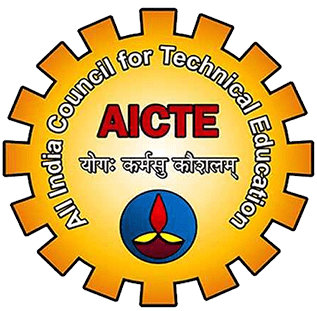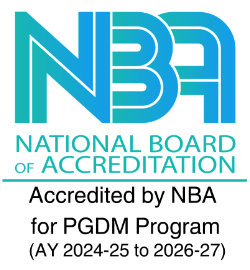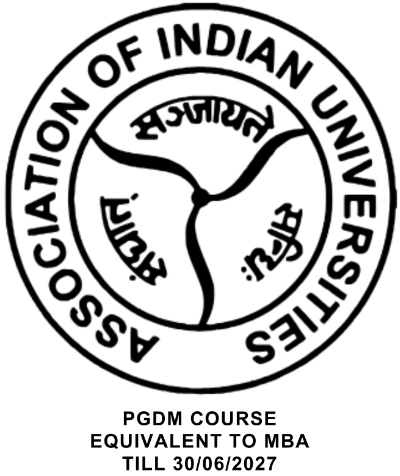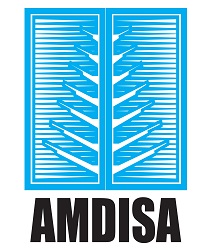SDVP 2019
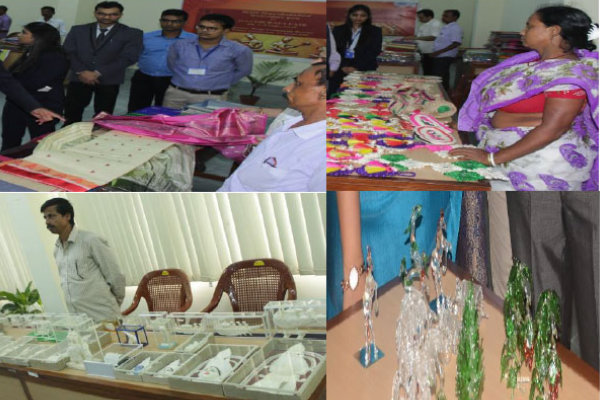
International Conference
Sustainable Development – A Value Chain Perspective, SDVP-19
December 6-7, 2019
BACKGROUND
The global population is increasing by 100 million every 14 months based on which it is estimated that we will be 9.7 billion by 2050 and 10.9 billion by 2100. With the limited recourses of the earth and further their exploitation to fulfill the human requirements through economic activities, we will be exploiting the recourses available. Exploitation of recourses will create an imbalance specifically on environment, water and wealth distribution across the world besides other factors. Human migrations will be acknowledged not for better living but due to scarcity of un availability of potable water, rising water levels ,drought ,unavailability of clean air. This all will compel our generations to live in misery. Economic growth without sustainability has no meaning. Sustainable development is need of the hour and must be incorporated in business activities across the value chain. For business enterprise, sustainable development means adopting business strategies and activities that meet the needs of the enterprise and its stakeholders today while protecting, sustaining and enhancing the human and natural resources that will be needed in the future. If sustainable development is to achieve its potential, it must be integrated into the planning and measurement systems of business enterprises, which will not only contribute to sustainable development but also add up to corporate sustainability.
The aims of current conference are to share the information and knowledge related to strategies for incorporating sustainable development principles to various management practices in line with the 17 SDG set by UN.
CALL FOR PAPER AND SUGGESTED THEMES
The conference would have the scope of following areas with an aim to sustainable development
| ENVIRONMENT SUSTAINABILITY | Environmental Sustainability, Pollution and Control, Global Environment Change, Ecosystem Management, Renewal Energy Management, Health and Environment, Bio Fuels, Green Energy System, Environment Restoration and Ecological Engineering. |
| ECONOMICS SUSTAINABILITY | Applied Microeconomics for Sustainability, Economic Reforms and Growth, International Economics, Economic Development, Agriculture Economics, Environmental Economics, Socio- cultural Economics, and Financial Economics. |
| OPERATIONAL SUSTAINABILTY | Supply Chain Sustainability, Lean & Agile Systems, Optimization, Humanitarian Relief Logistics and sustainability, Green Supply Chain, Supplier and Sustainable Development Management, Urban Transport and Environment. |
| FINANCIAL SUSTAINABILITY | Finance & Investment, Cost Management, International Finance, Financial system and Working Capital Management, Risk Management, Financial Sustainability, Micro Finance, Small and Medium Enterprise, Banking system and Financial Inclusion. |
| MARKETING SUSTAINABILTY | Sustainable marketing, Green marketing, Holistic Marketing, Sales Issues and Sustainability, Consumer Behavior related to Green Products, Green Distribution Channel & Networks, Products Disposal, Digital Marketing and Sustainability, Sustainable Branding. |
| HUMAN RESOURCE SUSTAINABILITY | Knowledge Management, Cross Culture Management, Sustainable Development Commitments and performance, Ethics and Sustainable Development |
| TECHONOLOGICAL SUSTAINABILTY | E-Governance, Interactive IT systems, Green IT Initiatives, Transparent Systems for IT, Advanced Energy Technologies, Clean Coal Technology, Technology and Sustainability. |
| SOCIAL AND CULTURAL SUSTAINABILITY | Sustainable Value Chain for SME’s, Developing Entrepreneur with Sustainability Organization, Rural development, Education Sustainability, Sustainable Tourism. |
| STRATEGIES FOR SUSTAINABILITY | Value Chain Innovation & Up gradation Governance in Value Chain, Infrastructure strategies, Technology Development Economic Policy, Capital for sustainable Investment, Myths & Realities of Sustainable Investment, Sustainable Investors, Policy Makers and the Public, Policy Makers and the Public, Corporate Responsibility and Sustainable Development. |
TARGET AUDIENCE
Industry Experts, Regulators, Financial Consultants, Academicians and Practitioners Research Scholars
NGOs and Registered, Rating Agencies & Law Societies/ Trusts Firms, Banks/ NBFCs/ Chartered Accountants , Microfinance Institutions, Cost Accountants , Economists , Company Secretaries , Importers/ Exporters.
ORGANIZING COMMITTEE
| Patron | Prof. (Dr.) Atmanand (Director, MDIM) |
| Conference Chair | Dr. Sunil Giri |
| Conference Co-Chair | Dr. Pinku Paul and Dr. Paroma Mitra |
| Convener | Dr. Subhajit Bhattacharya |
PAPER SUBMISSION GUIDELINES
- Submission of the extended abstract(s) and full paper (s) (in MS Word/ PDF) by the corresponding author(s) should only be submitted on Easy Chair link below: https://easychair.org/conferences/?conf=sdvp190
- Deadline for the submission of Extended Abstract is 30th Sep 2019. The mentioned deadline shall not be extended under any circumstances.
- Authors are advised to use the same submission account to upload their papers. Papers sent by any other mode will not be accepted.
- The notification of acceptance of extended abstract will be subjected to Conference committee decision.
- Deadline for the submission of full-length paper is 31st Oct 2019. The mentioned deadline shall not be extended under any circumstances.
- Corresponding author of the paper will be notified the acceptance/revision/rejection of their papers.
- It is mandatory to mention Paper ID for all future communications.
- Every contributor will receive an acknowledgement of their submission.
- The receipt full-length papers will be subjected to blind review process by Review Committee.
- Reviewers’ decision shall be final regarding acceptance/ rejection of the paper.
- All the selected papers after recommendation by the Review Committee will be submitted to Select Journals having ISSN or Book having ISBN.
- Please adhere to the specific guidelines presented in Table 1 with due diligence while preparing your final paper/manuscript. In the case of non-adherence, submissions will not be considered for the peer review process and shall be rejected.
Table 1: Guidelines for preparing final manuscript/full paper
| 1 | Initial Abstract submission 30th Sep, 2019 | Initially Extended Abstract (including Introduction, objective, methodology, technique used, findings, conclusion) of approx. 2500 words. |
| 2 | Keywords | 5 keywords arranged in alphabetical order. A comma should separate each keywords. |
| 3 | Full paper submission 31st Oct, 2019 | The body of the paper should follow the abstract (not more than 300 words). Divide the body of the text into headings like Introduction, Literature review, Objectives, Methodology, Results, Discussion, Conclusion, and References or any other suitable headings as per the content blend. |
| 4 | Full paper length | 3000 to 6000 words (inclusive of tables and graphs) OR Minimum 5 -10 pages. Note: Papers less than 3 pages will not be reviewed and may be rejected outright! |
| 5 | Title of paper | The title of the paper should be in ‘Sentence case’, font size 14 point, bold and centered at the top of the first page. |
| 6 | Author(s) Affiliations Format | Name Affiliating Organization Email Id Mobile No |
| 7 | Headings | First-level headings should be left aligned, bold-faced and in “Capital Letters”. The font size should be 12 point. Second-level headings should be left aligned, bold-faced and in “Sentence case”. The font size should be 12 point. Third-level headings should be left aligned, bold-faced and in “Italics”. The font size should be 12 pt. font |
| 8 | Equations | All equations should appear on the separate lines, left aligned and numbered consecutively. Numbers of the equations should be mention in the parentheses and be right aligned. |
| 9 | Appendices, if any | Appendices should immediately follow the body of the paper and precede the references. |
| 10 | References (with help of Reference menu in MS Word ) | References in the text matter should be quoted as per the following: In one Author: (Granato, 1995) If two Authors: (Brown and Warner, 1985) If three or more Authors: (Moeller et al., 2005) If two or more references are to be quoted for a certain concept or text line: (Brown and Warner, 1985; Granato, 1995; Moeller et al., 2005) Details of the references quoted in the text should appear at the end of the paper in alphabetical order and be written in APA style. For website references, if any, it is mandatory to provide “Accessed on” |
| 11 | Foot notes | Footnotes strictly not allowed anywhere in the text. Endnotes, if any, should be place at the end after references. |
| 12 | Exhibits/Tables and Figures/Graphs | Exhibits/tables must be typed using MS Word table format. All graphs should be prepared in MS Excel and then imported to MS Word. Insert the tables and figures as close as possible to the citations within the context. Headings should be aligned left, bold-faced and in sentence case above the exhibit. Size of the headings for each exhibit should be 11-point font. |
| 13 | Font | Times New Roman |
| 14 | Font size | 12 point |
| 15 | Margins | Left: 1.5” Right: 1” Top: 1” Bottom: 1” |
| 16 | Paper | A4 size (Width 8.27” Height 11.69”) |
| 17 | Line spacing | Single |
| 18 | Electronic submission | PDF and DOC |
| 19 | Plagiarism Criteria | The authors should ensure that “Similarity Index (SI)” of their full paper/manuscript is ≤ 15%. In the case of SI >15%, the manuscript will be rejected. |
| 20 | Additional information | It is responsibility of the author(s) to check grammar, spellings, punctuation marks, etc. thoroughly before submission of the paper. |
| 21 | Copyright form | Submitted papers should be original and contain contributions of theoretical, experimental, application or be unique experience reports. |
In case of any clarifications or queries, the authors can contact sdvp@mdim.ac.in
CONFERENCE VENUE
The conference will be held at MDI, Mushidabad, Sakim-Katni, Kulori, Post-Uttar Ramna, P.S. Raghunathganj, Murshidabad, West Bengal 742235. There are limited numbers of rooms available on the campus for participants of the conference. Sharing accommodation shall be arrange for the registered delegates on first come first serve basis only on prior intimation at least 10 days prior to date of commencement of the conference.
REGISTRATION FEES
| Type of Delegates | Indians(Rs) | Foreign(USD) | ||
| Early | Late | Early | Late | |
| Corporates | 5000 | 5500 | 250 | 300 |
| Academic/ Research Institution | 3500 | 4000 | 125 | 150 |
| Research Scholars / Spouse | 2000 | 2500 | 100 | 125 |
| Students | 1000 | 1250 | 50 | 55 |
Note : 18% GST extra as per as Government of India Rule
*All registration fees include conference proceedings, conference bag, breakfast and meals on Conference Days.
*Registration fee does not include Accommodation Cost.
GUIDELINES FOR PRESENTATION
ORAL PRESENTATIONS
Oral presentations with Power Point Presentation invited talks that are often 15-30 minutes in length and leave just a short time, if any, for questions from the audience. The presenter will prepare a conference paper that will be present and is typically a more focused, narrower version of their overall project.
BENEFITS TO AUTHORS
- All accepted papers will be published in SCOPUS Index journals or Edited book
- Journal of Social Sciences (JSS) PUBLISHED SINCE 1997, PRINT: ISSN 0971-8923, ONLINE: ISSN 2456-6756
- Journal of Sociology and Social Anthropology (JSSA) PUBLISHED SINCE 2010, PRINT: ISSN 0976-6634, ONLINE: ISSN 2456-6764
- Discount for Multiple Paper registration by single Author
- Discount for Multiple Paper registration from single Institution
- Best Paper Award
- Best Student Paper Award
IMPORTANT DEADLINES AND DATES
| Call for paper | 15th Jun, 2019 |
| Submission of Abstract | 30th Sep, 2019 |
| Notification of Abstract acceptance for presentation | 17th Oct, 2019 |
| Submission of Full Paper | 31st Oct, 2019 |
| Notification of Paper acceptance | 19th Oct, 2019 |
| Camera Ready Paper | 14th Nov, 2019 |
| Registration | 21st Nov, 2019 |
| Conference Dates | 6th -7th Dec, 2019 |
SPONSORSHIP OPPORTUNITIES
The conference provides an excellent opportunity for financial institution/ University/ banks/ professionals to promote their product & services to the focused audience besides networking during tea/ coffee and lunch intervals. The sponsorship details are as under:-
| Category | Amount (Rs.) | Benefits |
| Conference Partner | 2 Lakhs | All Benefits as stated below 1-9 |
| Platinum sponsor | 1.5 Lakhs | From 2-9 and 12 |
| Gold Sponsor | 1 Lakh | 2,3,4,5,9,10, 12 |
| Silver sponsor | .50 Lakh | 2,3,4,5,9,11, 13 |
- Status of ‘Conference Partner’ the Sponsor name and logo will be prominently displayed at the Summit venue.
- Branding of company’s logo on the main backdrop and thank you panel at the Summit.
- Company Logo and Speaker details in the newspaper advertisement.
- Speaker slot to a company representative
- Insertion of Company’s brochure and publicity material into the documentation pack.
- Complimentary exhibition space of 2X2 sq. meters at the venue of the Summit.
- 10 Delegate Passes to attend the Summit.
- Screening of a Corporate Video during the Break
- Display of 2 Company banners inside the Summit hall or Lunch area.
- 7 Delegate Passes to attend the Summit.
- 5 Delegate passes to attend the Summit. 0.50 Lakhs
- Full page ad on conference proceeding
- Half page ad on conference proceedings
FOR FURTHER DETAILS, PLEASE CONTACT
Prof. Paroma Mitra
Assistant Professor, MDI, Murshidabad
E-mail: paromamitra@mdim.ac.in
Contact No: 8170057090
Prof. Subhajit Bhattacharya
Associate Professor, MDI, Murshidabad
E-mail: sbhattacharya@mdim.ac.in
Contact No: 9470140279
SPECIAL ATTRACTION: TWO DAYS EXHIBITION ON HANDICRAFT MURSHIDABAD AND BENGAL
The place also known for its silk textiles. The Murshidabad silk sarees made from ivory and shola pith are light, vibrant and a must-buy. The place is also famous for its brass and bell metal ware, handicrafts (ivory and wood), Jute works, Glass works.
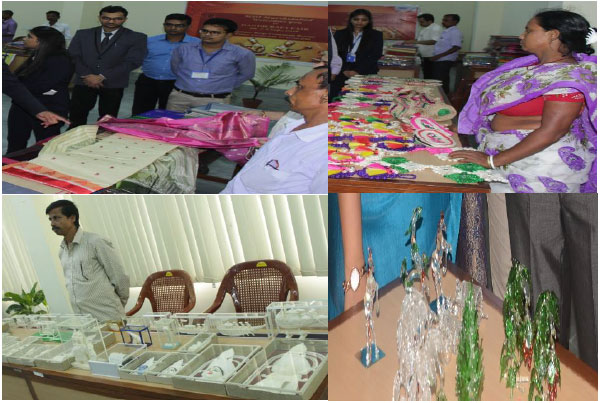
PLACES AROUND THE INSTITUTE
Murshidabad is a district in the state of West Bengal situated on the southern bank of the river Bhagirathi. It was the last capital city of independent Bengal and known for its Mughal and British colonial history. Among several historical structures built during the Mughal and British rules is the Hazarduari Palace(1000 doors) built by Duncan McLeod, it is now a museum showcasing armory, paintings and portraits of Nawabs and is one of the prime attractions of the city. Others are Moti Jheel, Muradbagh Palace, Nizamat Imambara, Wasif Manzil, Footi Mosque, Khosh Bagh, Katra Mosque, KathGola, Nasirpur Palace etc.

